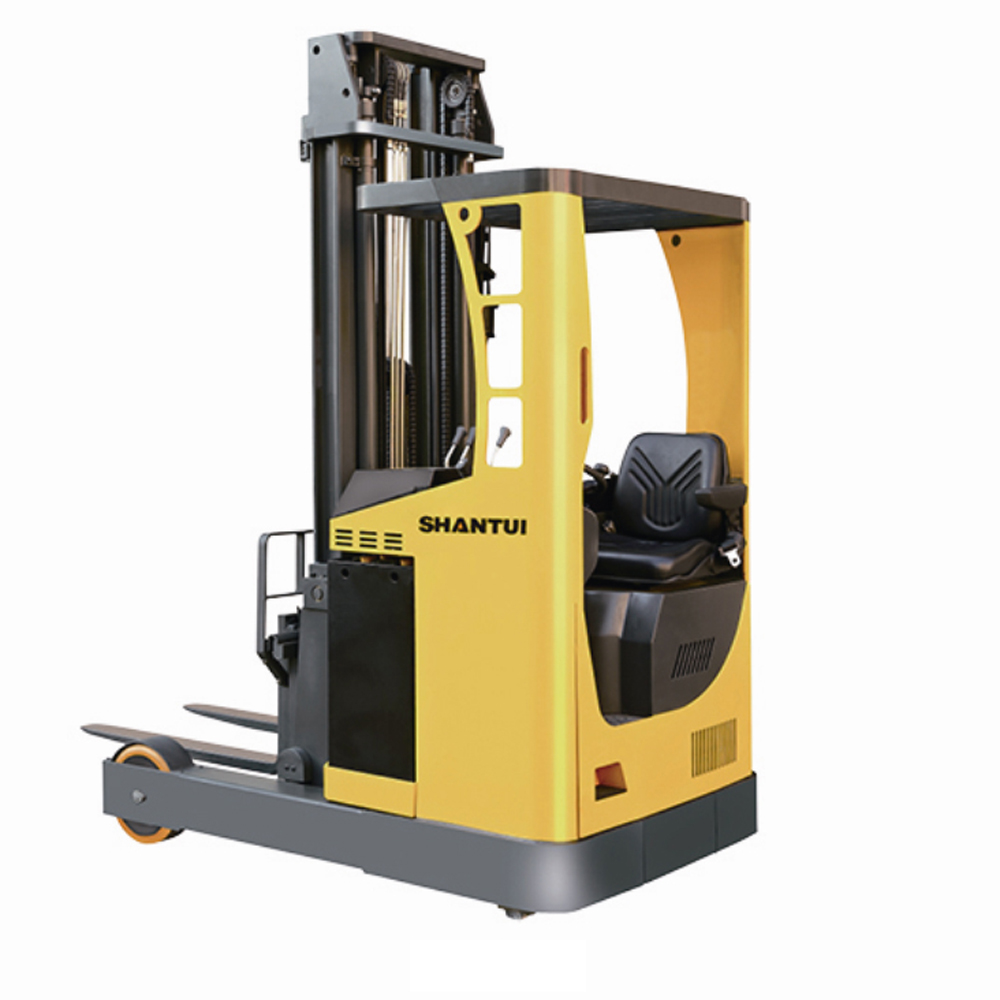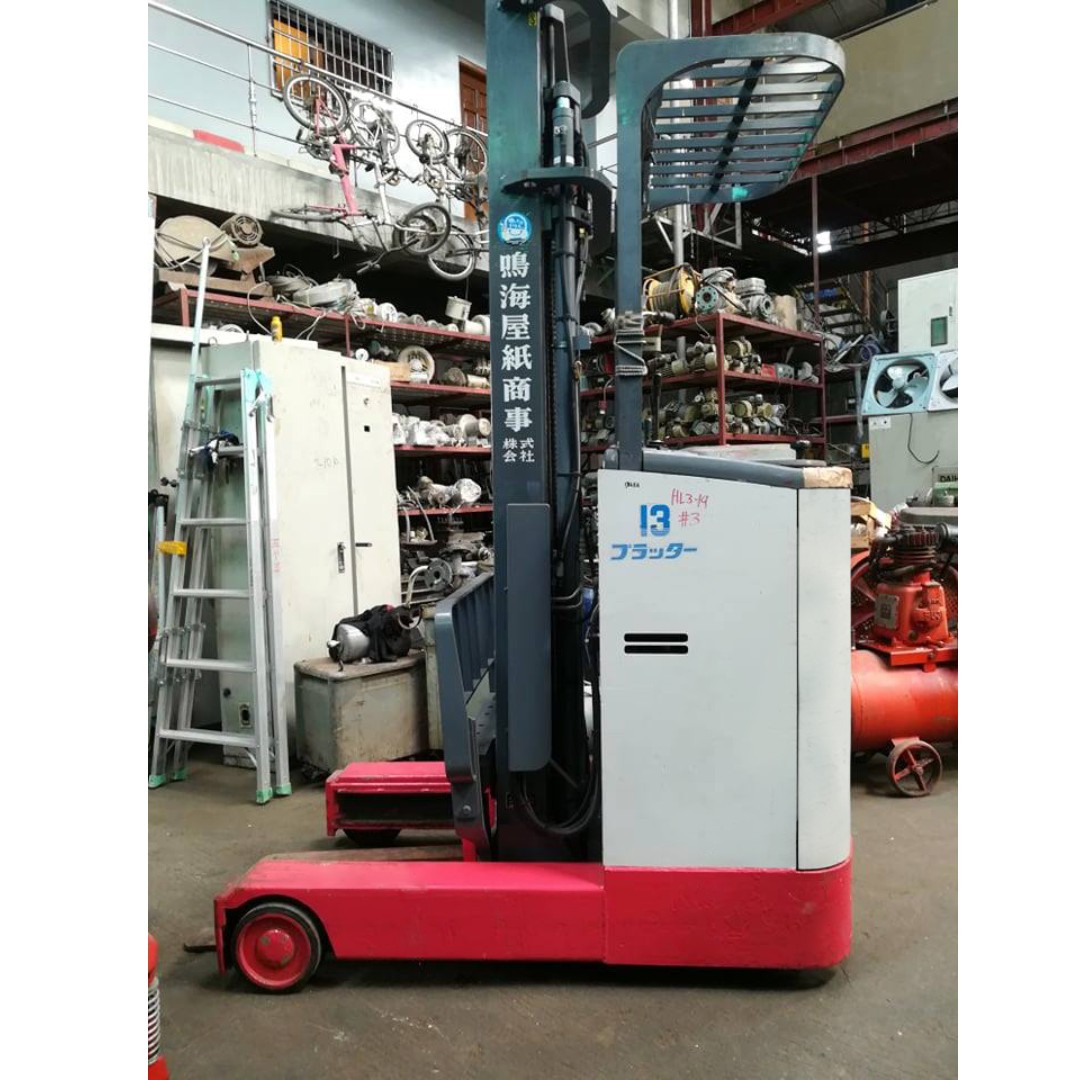Stand Up Reach
Like so many inventions, the invention of the forklift was created out of necessity.
On a stand up forklift, such as a reach truck, you do not have to apply the parking brake, as it is automatically applied when you come to a stop. One of the main advantages of a stand-up forklift is that it can operate in narrow aisles without any problems. Stand up to the challenges that we face in this life and persevere with faith, strength, and an undying commitment to God’s mission. Paul, the same person who stood trial before Festus in this chapter wrote these words in Ephesians 6:13, “Therefore put on the full armor of God, so that when the day of evil comes, you may be able to stand. 35,621 Stand Up Reach Truck jobs available on Indeed.com. Apply to Forklift Operator, Sales Associate, Restaurant Staff and more! The Toyota Stand-Up Rider forklift is built with the ultimate performance and comfort in mind, delivering improved ergonomics, reliability and durability while reducing service intervals. The Toyota Stand-Up Rider is a multi-purpose forklift that is ready to work. The employee is often required to stand, reach with hands and arms, and lift and/or move up to 20 pounds. Helps train other production operators as directed. 6 days ago Save job.

In 1917 an axle manufacturer created a truck to move materials around their factory. In 1923, another company added forks to lift loads as well as an elevated mast that could extend beyond the height of the truck.
And so, the forklift was born. If you are in need of a forklift for your operation you might be wondering which type of forklift to get.
In the following article we will discuss the pros, cons, and differences between a sit down and stand up forklift.
What is a Sit Down Forklift?
A sit down forklift can either be a three or four-wheel variety. The three-wheel forklift is best for small spaces. A sit down forklift is definitely more comfortable for the operator. Those who spend long stretches of time on a forklift may prefer this type of forklift, especially if they won't need to exit the machine to move products around.
What Is a Stand Up Forklift?
A stand up forklift is sometimes called a stand on or electric rider. This type of electric forklift is best for when an operator needs to frequently get on and off the lift truck.
These forklifts are generally shorter and are easier to maneuver in small spaces. Their turning radius is excellent as these forklifts are very compact.
Some operations require the use of this type of forklift due to the workload requirements.
Pros of Stand-Up Forklifts
There are many great reasons why you would choose a stand-up forklift. First of all, they are quite a bit shorter than sit-down units. Getting on and off is easier than sit down forklifts. It's also quicker to get on and off of the lift because you don't have a seatbelt remove and put on, which can slow you down. On a stand up forklift, such as a reach truck, you do not have to apply the parking brake, as it is automatically applied when you come to a stop.

One of the main advantages of a stand-up forklift is that it can operate in narrow aisles without any problems.
With these machines, operators stand sideways and do not need to turn their neck into an uncomfortable position to see. Many operators prefer stand-up forklifts because they avoid neck strain when reversing. The sideways position of the operator provides better overall visibility.
Approximately 35,000 serious injuries and 62,000 non-serious injuries involving forklifts occur each year. Many studies suggest that standing up when operating a forklift helps keep the operators more alert.
If standing up helps operators be more alert, that is a good thing that could reduce injuries.
Cons of Stand-Up Forklifts
One disadvantage to a stand-up forklift is that the operator is not as comfortable in these forklifts. There is no cushioned seat to rest on. Also, operators will have to get used to using a joystick to steer the lift instead of a steering wheel and levers.
When to Choose a Stand-Up Forklift
If your operation will require driving in reverse 25% of the time (or more), a stand-up forklift is a good idea. Also, stand up forklifts are ideal if your operator will need to get on and off often.
Finally, if you have narrow aisles, a stand-up forklift is definitely your best bet.
Pros of Sit-Down Forklifts
One of the main advantages of sit-down electric forklifts is that they can move at faster speeds. Their lift and lower speeds are generally faster as well.
This means that in a high-volume operation, such as a distribution center, you can increase productivity and efficiency by choosing a sit-down forklift.
Another big advantage is driver comfort. Sit down forklifts allow operators to be off their feet while they operate the forklift. If your operator needs to drive a forklift for extended periods of times, it is best if the operator can sit.
If your operator will sometimes drive on slippery surfaces, a sit-down forklift is safer. Even if the lift slides, the operator is safely buckled in their seat, inside the operators compartment.
Most operators are familiar with sit down lifts. Switching to stand up models will mean spending resources on training staff. You would avoid those costs by sticking with a traditional sit-down forklift, as long as it makes sense for your particular application.
Cons of Sit-Down Forklifts
As we mentioned earlier in this article when operators are seated, they may not be as alert as when they are standing. Also, a sit-down forklift limits visibility when driving in reverse. An operator would need to twist his torso and neck to look behind him or her.
If the operator has to constantly twist his or her body, it can cause ergonomic problems as well as discomfort.
When to Choose a Sit-Down Forklift
If your operation calls for prolonged forklift use, driver comfort may cause you to choose a sit-down model. If your work application calls for driving on wet or slippery surfaces, a sit down forklift is the safer choice as well.
Main Differences Between Sit Down and Stand up Forklifts
To recap, there are four main differences between the two types of forklifts.
The first is the ease of getting on and off. Stand up forklifts make it easy for operators to hop on and off thanks to the trucks low profile “deadman pedal” and lower height.
Stand up forklifts offer better visibility when moving in any direction due to the sideways standing position of the operator.

The third consideration is sturdiness and maneuverability. A sit-down forklift offers stability and safety in case of a sudden stop or slip. Yet, a stand-up forklift offers better movement capabilities in small spaces.
Lastly, is the comfort of each. Sitting down is more comfortable than standing. Especially for long stretches of time. But not having to twist your neck and body when reversing is more comfortable.
__08020.1555461459.jpg?c=2)
Which Forklift is Right for You?
Thanks for reading. As you can see, there are pros and cons to both sit down and stand up forklifts. At the end of the day, the best forklift depends for you is going to depend on your needs and the application where the forklift will be operating.
Once you have decided on which forklift is best for your company, check out these forklift maintenance tips to improve safety and performance at your jobsite.
Read This Week: Acts 25
Three days after arriving in the province, Festus went up from Caesarea to Jerusalem, where the chief priests and the Jewish leaders appeared before him and presented the charges against Paul. Then Paul made his defense: “I have done nothing wrong against the Jewish law or against the temple or against Caesar.” Festus, wishing to do the Jews a favor, said to Paul, “Are you willing to go up to Jerusalem and stand trial before me there on these charges?” Paul answered: “I am now standing before Caesar’s court, where I ought to be tried. I have not done any wrong to the Jews, as you yourself know very well. If, however, I am guilty of doing anything deserving of death, I do not refuse to die. – Acts 25:1-2, 8-10 NIV
Acts 25 is a continuation of Paul’s trial that seems to be going on for an inordinate amount of time. He has more than adequately defended himself and disproven all the charges against him with eloquence, grace, and truth. Now he is in front of the new governor, Porcius Festus, who does not even know anything about the original Jewish plot against him. So Paul finds himself having to make his case again.
Governor Festus does not cooperate with the schemes of the Jewish leaders, but he does invite them to confront Paul again so he can review the case in person. At this time, Paul remains resolute and stands up with clarity and says, “I have done nothing wrong against the Jewish law or against the temple or against Caesar.” He affirms his innocence again of any crime and does so with inspiring confidence in the Lord and his mission.
When Festus raises the stakes on Paul in verse 9 and asks him if he is willing to go on trial before the court in Jerusalem, the Apostle takes an even bigger stand. He says in verse 10:
“I have not done any wrong to the Jews, as you yourself know very well. If, however, I am guilty of doing anything deserving of death, I do not refuse to die.”
With this tremendous statement of faith and courage, Paul undermines and destroys both the intent and case of the Jews. The religious leaders could not intimidate or make him denounce the gospel of Jesus as the Son of God because he was willing to face death for the mission. Their desire to kill him had no effect on Paul because his heart was already prepared to die for the calling that had been placed on his life.
Stand Up Reach Around
This chapter communicates to us the reality of our trials. Sometimes they go on for longer than we want them to. Sometimes we have to endure the same attacks over and over again. Sometimes the Enemy is persistent in his accusations and desire to destroy us. But through it all, in the power of the Holy Spirit, we have to stand up. Stand up to the challenges that we face in this life and persevere with faith, strength, and an undying commitment to God’s mission.
Paul, the same person who stood trial before Festus in this chapter wrote these words in Ephesians 6:13, “Therefore put on the full armor of God, so that when the day of evil comes, you may be able to stand your ground, and after you have done everything, to stand.” After we have done all we can do, sometimes the victory comes in just being able to keep standing up.
Stand Up Reach Truck
